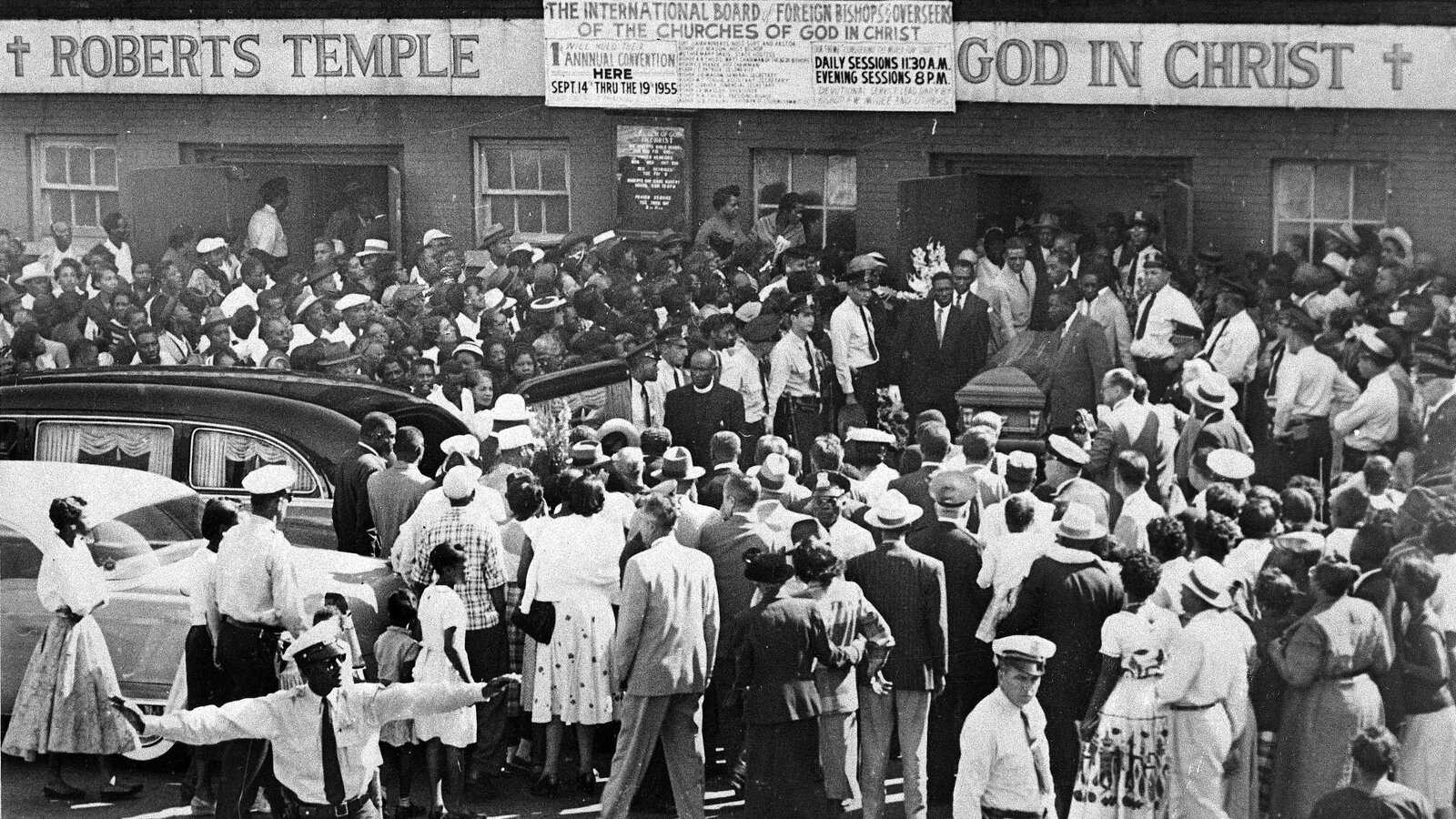Several U.S. officials on October 21 visited the Roberts Temple Church of God in Christ where leaders and historians gathered to share the historic significance of the church that held the funeral of Emmett Till.
The meeting came as the church marks its 100th Anniversary in Chicago’s Bronzeville neighborhood.
A Chicago landmark, the church is currently undergoing renovations as Senator Dick Durbin and U.S. Secretary of Interior Deb Haaland seek to designate it as a National Historic Monument. The designation would offer the church federal support from the National Trust for Historic Preservation, and the National Park Service for its role in the Civil Rights Movement.
In addition to Durbin, Congressmen Bobby Rush and Danny K. Davis also attended the event.
During her visit, Haaland said she met some of Till’s relatives and church officials. She also talked about the Roberts Temple Church of God in Christ’s rich history.
“These walls have borne witness to say much. That’s the meaning of community and I see it here in abundance,” Haaland said. “I’m here because this church is a key part of our nation’s history.”
As part of the designation process, U.S. officials visited the church to gather input from residents about the church’s pivotal role after Till was murdered in 1955.
Residents who attended the meeting spoke passionately about Till’s murder and his enduring impact on the African American struggle for equality and social justice.
“Today, we are advocating for this designation to move forward by President Biden through the Antiquities Act,” said Marvel Parker.
Parker is the husband of Till’s cousin, Reverend Wheeler Parker Jr., who was with Till before he was murdered and witnessed his kidnapping in Money, Mississippi. He attended the event but did not speak.
“The Chicago contribution to the Civil Rights Movement would not be complete unless you told the whole story,” Congressman Rush said.
“The legacy and the history of the Church of God in Christ is intermingled with the history of the Civil Rights Movement,” said Congressman Davis.
Maurice Cox, Chicago’s first Black Commissioner of Planning and Development, pointed out other Chicago landmarks in the Black community that are tied to Till’s life and death. He mentioned the original building of the Chicago Defender in Bronzeville and the Johnson Publishing Company building on Michigan Avenue. Both publications were the first to publish photos of Till’s mutilated face. He also mentioned Till’s home in Woodlawn that became a Chicago landmark in 2021.
“All the Till sites in Chicago and Mississippi matter because they are physical reminders of the people and events that changed the course of history,” Cox said.
“There is no other place in the United States that bears witness to how the galvanization of the Civil Rights Movement impacted not only the United States but the world,” said Sherry Williams, founder and president of the Bronzeville Historical Society. “I encourage madame secretary to bring a message of love and encouragement to our president to designate Roberts Temple Church of God in Christ a national monument.”
Till’s funeral at Roberts Temple Church of God in Christ was held on September 6, 1955. It was a day many did not forget. The 14-year-old boy’s mutilated body was viewed during an open casket funeral days after he was brutally murdered by two white men in Money, Mississippi.
His body was found tied to a cotton fan with barb wire in the Tallahatchie River. The two white men, Roy Bryant and J.W. Milam were acquitted of murder charges in a trial that lasted just over an hour. They later confessed to killing Till in an interview in Look magazine. The Department of Justice this year closed its investigation and declined to bring charges against Bryant’s wife, Carolyn Bryant Dunham, who in a book confessed to lying during the trial that Till made advances toward her.
Mississippi officials originally planned to bury Till in a local cemetery, but his mother, Mamie Till Mobley ordered that her son’s body be returned to Chicago. She told A.A. Rayner Funeral Home that she wanted an open casket funeral to show the world what the men did to her son. Over
100,000 viewed Till’s body during the funeral and several days of viewing.
Today, as the memory of Till remains strong in Chicago, efforts are underway to preserve Roberts Temple, 4021 S. State St. Built in 1922 as a single-story red brick structure, the building added a second story by 1927 as thousands of Blacks moved to Chicago during the Great Migration.
Since Till’s funeral, the building underwent several renovations. In 1992, the building’s red brick façade was replaced with tan brick. Over the years, the building’s roof fell into disrepair. In the sanctuary, a special screen hanged from the ceiling to protect guests attending last Friday’s event.
In 2020, the church was placed on the National Trust’s 11 Most Endangered Historic Places. Senator Durbin and Senator Tammy Duckworth proposed legislation to save the building and other historic sites tied to Till’s legacy. Last January the church received a $150,000 grant from the National Trust for Historic
Preservation’s African American Cultural Heritage Action Fund.
Mamie Till Mobley spent the rest of her life seeking justice for her son. An October 28, groundbreaking is set for a plaza outside Argo Community High School, where she was an honor student. The statue is scheduled to be in place by late April. The movie “Till” about Mamie and her son’s life before and after the murder is showing in movie theaters.






